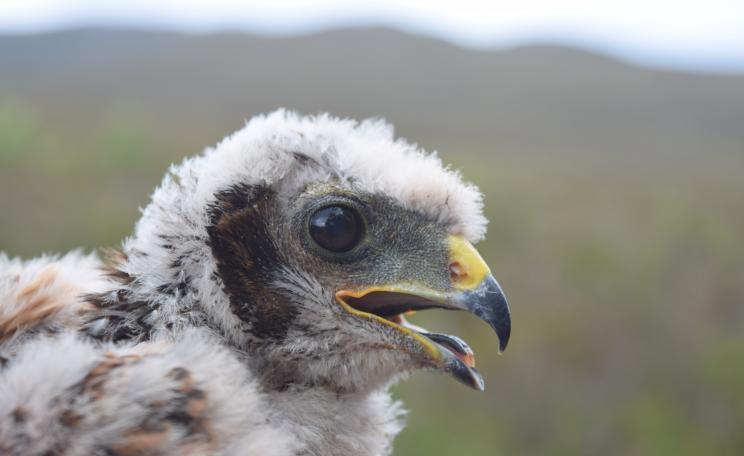Brood management is about forcing hen harriers to fit in with driven grouse shooting. That’s starting in entirely the wrong place; driven grouse shooting should instead fit around the recovery of hen harriers. And if it can’t, well, it needs to change.
The future of the hen harrier (Circus cyan's) - one of Britain’s most persecuted birds of prey - could be further threatened on the moors of northern England this summer with the start of a controversial two-year project designed in part to protect grouse bred for shooting, conservationists have claimed.
The plan, by the publicly funded agency Natural England, will involve the removal of hen harrier eggs and chicks found within 10km of another nest on a driven grouse moor. The chicks will then be raised in captivity for several months, and released back onto the moors later in the season.
The latest issue of Resurgence & Ecologist magazine is out now!
Natural England says the aim of the plan is to boost hen harrier numbers in the long term while reducing predation on grouse chicks.
Fragile number of birds
“This new wildlife management licence will give land managers confidence that impacts of hen harriers breeding on their land can be minimised, creating a win–win scenario,” according to Amanda Anderson, director of The Moorland Association.
However, many conservation groups, including the Royal Society for the Protection of Birds (RSPB), have raised concerns about the project, saying the number of birds is far too fragile.
“We all know why this magnificent bird is at such worryingly low numbers: the illegal killing of harriers in order to maximise the number of grouse that can be killed on driven moors across England and Scotland,” Martin Harper, the RSPB’s conservation director, said.
“Fundamentally, and this is where we think [Natural England] has got it wrong, brood management is about forcing hen harriers to fit in with driven grouse shooting. That’s starting in entirely the wrong place; driven grouse shooting should instead fit around the recovery of hen harriers. And if it can’t, well, it needs to change.”
As the latest issue of Resurgence & Ecologist was being prepared for publication, the RSPB had just sent a “pre-action protocol letter” to Natural England, which it described as the first formal step before considering whether to start legal proceedings against the agency.
Commercial game-shooting
Hen harriers have been “virtually ‘cleansed’” from driven grouse moors through illegal persecution, conservationist Ruth Tingay told Resurgence & Ecologist. As a result, the bird is now a species of the highest conservation priority.
“Yet here’s the government permitting the removal of hen harrier eggs and chicks to protect a grossly inflated red grouse population, just so those grouse can be shot for fun. It’s absurd,” Tingay said.
Last year there were only three successful hen harrier breeding attempts in the whole of England, even though there is sufficient habitat for an estimated 300 breeding pairs.
“The government contends the trial is for the protection of hen harriers but in reality it is once again all about the protection of the grouse moor owners’ economic profit,” Tingay added.
Tingay is co-founder and curator of the website Raptor Persecution UK, set up in 2010 to raise awareness of illegal wildlife crime on driven grouse moors throughout the UK.
Bird in jeopardy
Commercial game-shooting is “undoubtedly the biggest threat to some UK raptor populations”, Tingay said. In addition to hen harriers these include golden eagles, red kites, peregrines and goshawks.
This is because, in order to maximise the number of birds available to be shot, commercial game-shooting applies intensive management techniques, including the removal of all predators. Some, like foxes, stoats and crows, are killed legally.
While the future of hen harriers may look gloomy, coverage of illegal raptor persecution has improved in the last decade, Tingay said, which is good news for the birds.
“There’s barely a week goes by now when there isn’t some mention of it in the national press and it is a daily topic on social media platforms.”
This is particularly substantial in the run-up to the grouse-shooting season on August 12 and the introduction of Hen Harrier Day in 2014. With the fate of the bird in jeopardy, what the mood will be on Hen Harrier Day this year remains to be seen.
This Author
Marianne Brown is deputy editor of Resurgence & Ecologist magazine, where this article first appeared. Download a free sample copy of Resurgence & Ecologist here.







